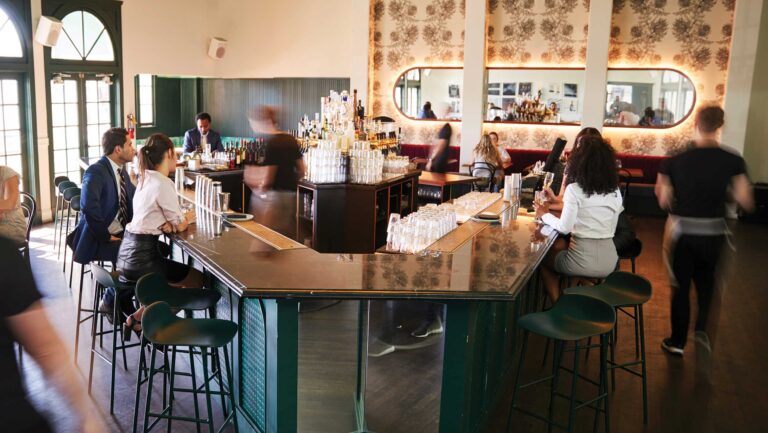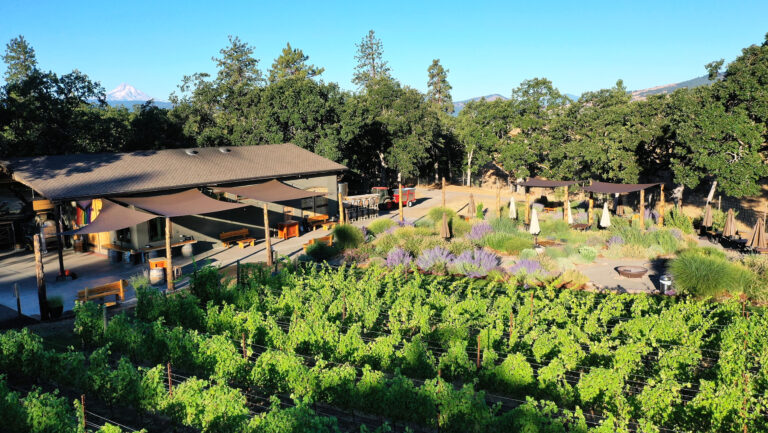In mid-March, when California Governor Gavin Newsom asked restaurants to close their doors against COVID-19, Jim Rollston, wine director at San Francisco’s Manresa, acted quickly, offering to sell select cult bottles from his cellar. “I had one [Weingut] Keller G-Max and thought, ‘Somebody’s gonna want this,’” he says. He also put other young bottles that require years of additional bottle age, like a 2016 Domaine du Comte Liger-Belair Vosne-Romanée, up for sale: “You feel okay about putting it into someone else’s cellar.”
Those are the kinds of decisions wine directors have been weighing as struggling restaurateurs look to their cellars for liquidity. Although moving $20 bottles with takeout food might be a no-brainer, the luxury end requires a much more strategic approach. For sommeliers and restaurant owners considering selling gems from their cellar to generate income, professionals shared their advice with SevenFifty Daily.
Set Your Priorities
Consulting sommelier Jon McDaniel of Chicago’s Second City Soil says protecting your restaurant’s identity is more important than getting quick cash: “Anything you would be heartbroken to sell or that defines who you are as a program, take those things off the list.”

Don’t miss the latest drinks industry news and insights. Sign up for our award-winning newsletters and get insider intel, resources, and trends delivered to your inbox every week.
A targeted sale, however, can reinforce a restaurant’s reputation. When Joe Campanale threw open the cellars at Brooklyn’s oenophilic destination Fausto, he was summoning aficionados looking for fine wines like a Château Rayas Château de Fonsalette Côtes du Rhône Cuvée Syrah or a Champagne Marie-Courtin Allégeance Extra Brut Rosé for 50 percent off his list price. The half-off purge lasted one weekend, and lines around the block garnered press attention.
Others decide what to sell based on inventory and allocations. Rollston felt he was able to part with some big California reds, which were desirable wines a few years ago but are out of fashion today. For her two-day sale at Manhattan’s Racines, Pascaline Lepeltier listed wines she could recoup later: plentiful Bordeaux or things for which she had a decent allocation. “We preserved what was rare because we won’t have much money to spend on wine when we reopen,” she says.
At San Francisco’s The Morris, wine director Paul Einbund is offering presales on yet-to-be-delivered allocations, a strategy that brings the liquidity to secure future vintages. “We might lose some of our 2017 Burgundy,” he says, “but we will keep a few bottles, make some people happy, and keep our allocations for next year.”

Discount Strategically
How do you balance the discount that moves a wine with the margin that makes the sale worthwhile? Do your homework, says Rollston. He checks open-market pricing and availability on sites like Wine-Searcher. If there are only a couple of bottles on offer, the wine is rare enough that you can price it just below the market, and someone might buy it. Wines with longer-lived reputations—Burgundy’s Coche-Dury Corton-Charlemagne, for instance—can have many sellers. Those are difficult to offload without gutting the price, so you might want to hold onto them.
Brent Kroll has taken a more blanket approach. At Maxwell Park in Washington, D.C., he’s priced everything, from entry-level sparkling to DRC, at 30 percent off. That’s still higher than retail, so it protects his bottom line. “If you sell your wine at 50 to 60 percent off, you’re creating a ripple effect for when you reopen,” he says. “If everyone’s dining with you on the cheap now, it will be hard to command viable pricing later.”
Einbund is primarily pricing at retail, but given the wines his clients have been buying—a $4,400 Coche-Dury Corton-Charlemagne, a $5,500 1991 Gentaz that two parties are vying for—that strategy is very much helping “to keep the lights on,” he says. “I have a fair amount of people requesting special bottles. Some of our regulars are dining here multiple times a week and buying multiple bottles to support us. They’re paying retail pricing, so maybe spending the same amount they would in the restaurant but drinking bigger.”
Others price relative to their inventory. At Spago Beverly Hills, wine and spirits director Phillip Dunn kept a good amount of Krug Grande Cuvée 167ème Édition around for glass pours, so he’s now able to offer it at the bargain price of $130 a bottle to go with meal deliveries. And with a case in his cellar that he bought from a collector on the gray market, he could put a 2003 Château Mouton Rothschild on Spago’s steak-to-go “Cut Dinner” menu for $650.
Sean Beck, beverage director at Houston’s Htown Restaurant Group, is selling everything from $85 “starter” six-packs to a 2014 Domaine Bonneau du Martray Corton-Charlemagne for $350. Wine deliveries have brought in as much as $13,000 a weekend, plus tips for staff. Sales like that, he says, “help us keep going and bring in revenue that has, in turn, allowed us to bring [furloughed] employees back on. We have a number of servers who have been delivery drivers for weeks. The sales also help keep producing shift meals for out-of-work staff, both our own and others. It’s not a cure, but it stops the bleeding.”
Tap Your Regulars
“Avoid the scavengers,” says Beck. He learned his lesson with one bargain hunter. “I put a bottle of Continuum in a bag for him for $190, and he didn’t tip my staff, so what’s the incentive for me?” he says.
Instead, lean on trusted customers who will spend more to support you. “Call that guy who loves Brunello and say, ‘You know all those times I waived corkage for you? Now is the time to pay it back.’ Reach out to people you’ve always taken care of,” says Second City Soil’s McDaniel.
Nelson Daquip, beverage director at Seattle’s Canlis, is mostly selling wines below $50 to pair with food deliveries. But there are labels in a whole different category on Canlis’s list that Daquip has been willing to part with for trusted guests. “We’ve never sold Domaine de la Romanée-Conti out the back door,” he says. “There were a few people I knew who drank it in the restaurant that I felt comfortable wouldn’t resell it, and that’s where I went. I was not going to discount it, and they felt comfortable with that.”
But, because Daquip has a relationship with his regulars, he can also direct them to bottles for which he’ll make a decent return but won’t deplete his entire stock of the most cultish wines. “If they say, ‘We’re really only interested in it if it’s going to be discounted,’ I say, ‘Why DRC? Save that for the next time you’re in the dining room having dinner and we can provide the experience it’s meant to be enjoyed with. Here’s something that’s $300. It’s a good start. And they’re like, ‘Okay, cool.’”
Such folks help build word of mouth. Says Austin Bridges, wine director at Portland’s Nostrana and Enoteca Nostrana, “I have regulars who want to put together a mixed case. They give me a price point, and I throw in some cool stuff. I tell them, ‘Hang onto the La Canonica, but drink these others now.’ They tell their friends they’re quarantine drinking with, so I sell similar wines to them. Instagram has certain powers, but the true power is when people are excited and tell their friends.”

Provide More than Just Wine
Regulars look to restaurants for entertainment and guidance. If you provide it, you can move pricier wines. Daquip has added a “text a somm” number to Canlis’s website and a “raid the cellar” button to its Tock ordering page. Both allow potential wine buyers to reach him directly for bespoke advice on purchases.
Collin Moody of Chicago’s Income Tax Bar promoted “fun” bundles of allocated wines on Instagram, like a $99 “steak dinner” two-pack including a 2014 Duplessis Chablis Premier Cru and a Cathy Corison Napa Valley Cabernet. The strategy piqued interest, creating “a culture around people calling and emailing” for collectibles, he says. “It’s a best-case scenario for them. Like, ‘Hey, you know that Keller you’ve been looking at on the list for two years? Now it’s this price.’ With all the money they’re not spending going out, that bottle looks more reasonable.”
Some restaurants are partnering with cult producers to garner interest. Einbund has hosted Zoom chats with Ceritas. The winery offers its hard-to-get wines to The Morris’s customers, and a quarter of its sales go back to the restaurant’s staff.
When to Consider Auction Houses or Consultants
To finance its employee relief fund, Union Square Hospitality Group (USHG) held an online auction with Zachys, where it offered 498 lots. For that much wine, using auctioneers make sense. Auction houses have stables of collectors to reach out to, and they put marketing power behind the sales. But in an auction, says McDaniel, “nothing is guaranteed.” Results are best with blue-chip bottles, like the Lafite or Margaux that USHG was selling. “If your wines are too obscure,” he says, “they won’t get bid on.”
Auctions also take time. Wines must be inventoried, catalogues printed, bids finalized. But Zachys, WineBid, and other online auctioneers are fast-tracking payouts now. “We understand the difficult position they’re in, so we’re trying to work with our restaurant partners as closely as possible,” says Zachys’ Jeff Zacharia. Zachys also waived its 10 percent commission (which is comparable to that at other houses, like Sotheby’s) and is sharing its buyer premium with USHG.
A quicker, surer tactic is to contact a consultant like Private Cellar Selections’ Tim Kopec. He hunts down wines for collector clients. “When you go to auction, it takes time, and it’s the open market. It can be good to you, and you can make more than you thought you would, or it can be very penal. A company like mine can make a cash offer,” he says. “People give us their list and say, ‘We need to raise $10,000.’ We negotiate from there. We provide liquidity at fair prices.”
Whichever route you choose, don’t wait too long to sell. “As we saw in 2008, prices can go down quickly,” says Kopec. “The earlier you do it, the greater control you have.”
Keep an Eye On the Future
With the goal of refilling your dining room with wine drinkers one day, you can protect your list or plan on rebuilding it later. Joe Campanale chose the former tactic with his single-weekend sale. “We wanted to bring in funds early on, but we didn’t want to wipe out our inventory because we plan on reopening,” he says. Still, given the prolonged shutdown and the “need to get creative,” according to business partner Ilyssa Satter, Campanale is holding another cellar sale at his natural wine bar in Brooklyn, LaLou, on May 16.
Sean Beck took the opposite approach. “I’ve decimated two of my lists,” he says. “But there’s never been more great wine available, and once this is all done, sadly, there will be fewer people in my genre to buy it, so I will have options.”
In the end, says Pascaline Lepeltier, restaurants shouldn’t have to ravage their cellars to survive. “We are being forced to sell off our means of work because the state is not able to give back what we’ve contributed as businesses. We paid enough taxes. We need help from the government.”
But if loans don’t come through, she’ll sell more. “If tomorrow we have to start from scratch, we start from scratch,” Lepeltier says. “We have the talent in house to make a small, tight list and build back from that. There will always be wine. Some of the greatest wines come from tiny wineries without big names. You can really start again.”

Dispatch
Sign up for our award-winning newsletter
Don’t miss the latest drinks industry news and insights—delivered to your inbox every week.
Betsy Andrews is an award-winning journalist and poet. Her latest book is Crowded. Her writing can be found at betsyandrews.contently.com.







